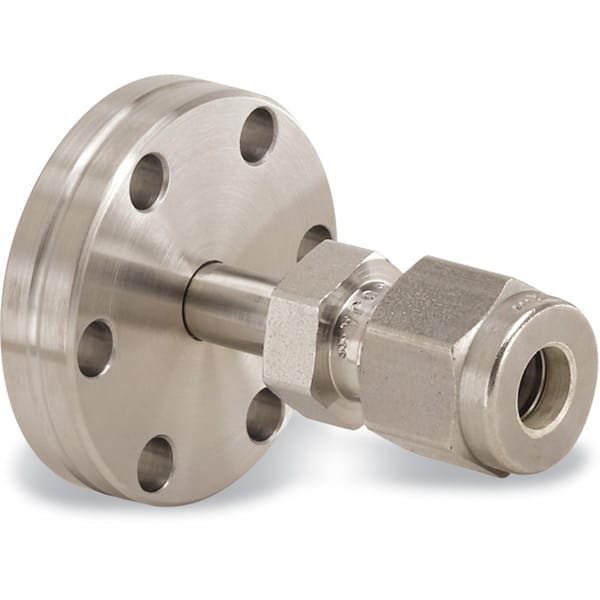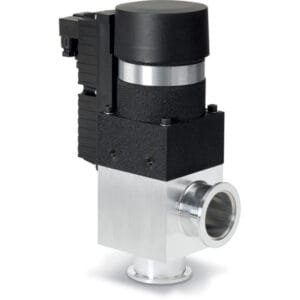CF to Swagelok VCR® Adapter: UHV-Ready Metal Seal Transition for High-Purity Gas and Vacuum Integration
The CF to Swagelok VCR® Adapter from TFM delivers a precision-engineered solution for connecting ConFlat (CF) ultra-high vacuum flanges with Swagelok VCR® metal gasket face seal fittings. Designed for maximum purity, durability, and sealing integrity, this adapter is a critical component for vacuum systems, semiconductor gas lines, and research instrumentation where leak-tight performance and repeatable assembly are non-negotiable.
On one end, the CF flange provides a metal-to-metal knife-edge seal with a copper gasket, suitable for bakeable and UHV environments down to 10⁻⁹ torr. On the other, the Swagelok VCR® connector offers a metal gasket face seal system with radial compression, ensuring zero dead volume and compatibility with high-purity gas systems.
Key Features of CF to Swagelok VCR® Adapter:
Direct CF-to-VCR® Interface
Allows seamless mating of CF flanges (e.g., DN16CF, DN35CF, DN63CF) with Swagelok VCR® male or female fittings, simplifying vacuum-to-process system design.UHV-Compatible Performance
The CF flange provides bakeable, leak-tight sealing with annealed copper gaskets, ideal for ultra-clean, high-vacuum environments.Metal Gasket Sealing (VCR®)
Swagelok VCR® fittings compress a replaceable metal gasket between flat, polished surfaces, forming a reliable, torque-free seal rated for repeated thermal cycling and high-pressure operation.Material: 304 Stainless Steel
Precision-machined for superior chemical resistance and structural integrity; suitable for cleanroom and corrosive environments.Wide System Compatibility
Adaptable to a variety of applications, with both male and female VCR® gland options and custom configurations available upon request.
Ideal Applications:
High-vacuum chambers connected to gas delivery or analysis systems
Semiconductor fabrication tools and load-lock interfaces
Leak-sensitive instrumentation in R&D or metrology
Cryogenic or corrosive environments requiring all-metal seals
Modular vacuum setups where fast, repeatable connections are needed
TFM also offers complementary components such as CF to Swagelok® tube adapters, CF-to-NPT transitions, VCR® caps/plugs, and UHV flange hardware kits—ensuring full system integration from chamber to gas panel.
In conclusion, the CF to Swagelok VCR® Adapter by TFM serves as a trusted link between the vacuum world and high-purity gas delivery systems. Its UHV-compatible design, metal-sealing technology, and robust 304 stainless steel construction make it indispensable for advanced scientific and industrial vacuum infrastructure.





Reviews
There are no reviews yet.